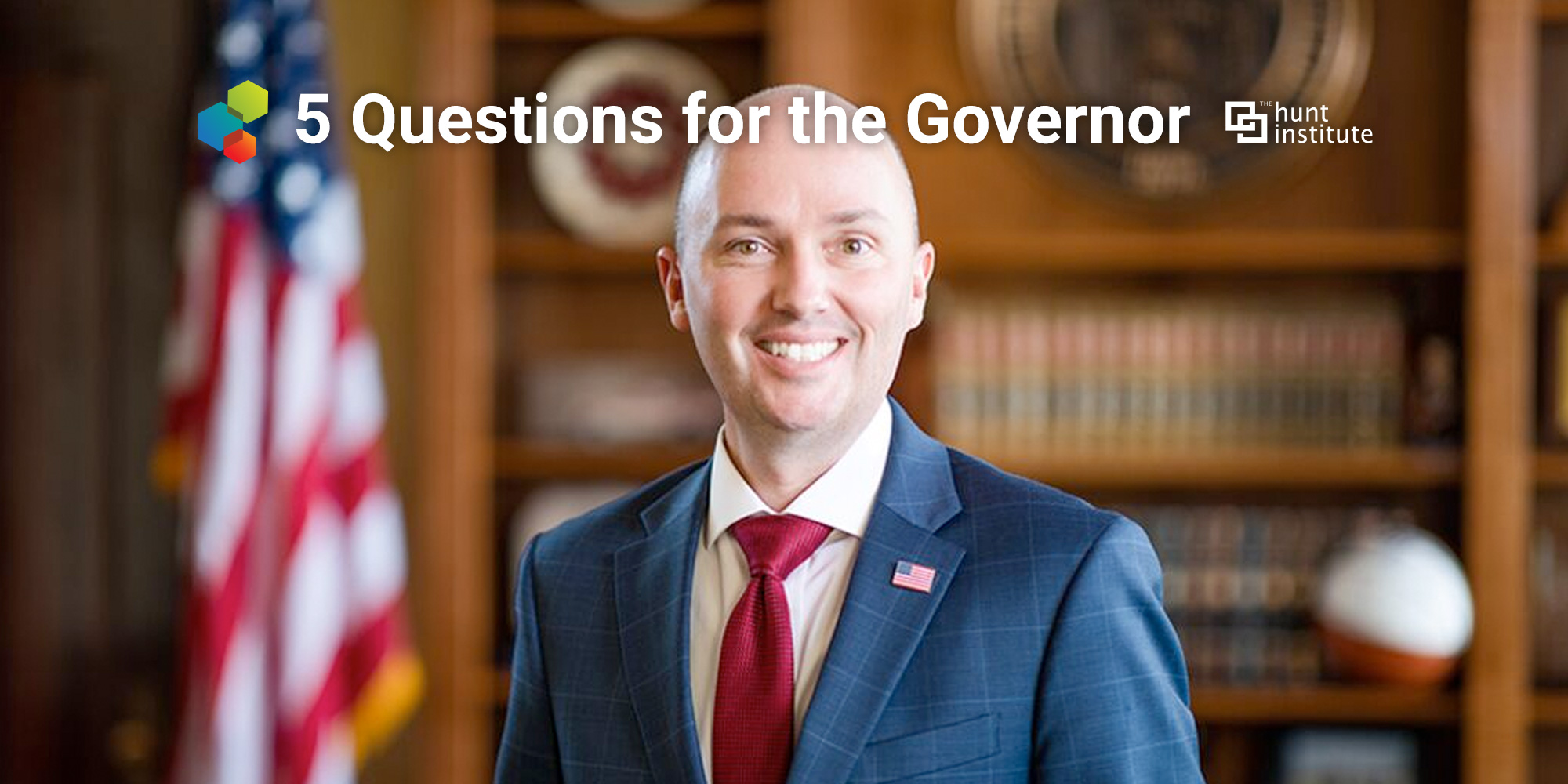Where do you go for the top news in Early Learning at the state level? Check out “5 Questions for the Governor,” where we explore the top Early Learning challenges and successes in states across the nation. We’re thrilled to partner with The Hunt Institute on this series.
1. A mission of your administration is to address funding equity in the education system and to increase teacher pay. How do you see initiatives like this supporting the state’s overall economy and growth?
As we all know, our future depends on the well-being of our children, and the education system is just one of the ways we can improve individual lives as well as invest in Utah’s overall economic success.
Initiatives such as funding equity and increasing pay for teachers are critical for our state’s economy since they not only attract talent to the profession, they increase the retention of great teachers and ensure that students throughout the state—specifically those in lower-income districts—are prepared to continue their post-secondary education and enter the workforce. We’re also creating new partnerships with the private sector to help provide job training, apprenticeships and exposure for our middle and high school students to a range of career options.
We hope these initiatives will also help build a more diverse workforce and provide students with teachers who share their cultural background. We know having diverse role models helps children perform better in school settings.
2. The administration’s first 250 days in office saw many successes, including a process to identify pandemic-related learning gaps and a fiscally responsible use of federal funds to address COVID-19-related learning disparities. During this school year, how will these achievements continue to support the education system?
We have taken steps to ensure our students started off on the right foot this school year by identifying and overcoming learning and equity gaps through summer and afterschool programs, tutors and other strategies. We will also continue to have a particular focus on expanding broadband access to rural and underserved areas throughout the state.
We were grateful to have most of our students attend in-person instruction for much of the last school year, and we continue to ensure as much in-class time as possible for our students going forward. In addition, our state had a relatively high percentage of students participate in statewide assessments at the close of the last school year. Leaders at the Utah State Board of Education are in the process of assessing the available data that will allow schools and districts to really hone efforts toward students who have felt the academic impact of COVID-19 most significantly.
3. Under your leadership, the state has made great strides to improve state government efficiency, including the restructuring of state agencies and hiring a new chief innovation As governance continues to be a leading conversation in early childhood education, how do you see your efforts in government efficiency complementing the early childhood system of Utah?
As we work to streamline and modernize state government, our office is committed to supporting parents and caregivers of Utah’s youngest children by being responsive and improving their experience when interacting with various state agencies.
The Governor’s Early Childhood Commission, in conjunction with consolidation work taking place within state departments, is working to evaluate and consolidate services for families and students in their early years. The focus has been to improve efficiency, productivity and customer service from the state, private and nonprofit organizations that provide early childhood services in Utah. This work will provide better access and expand optional high quality early learning and extended-day kindergarten options we have available for every child.
4. The One Utah Roadmap outlines your policy priorities and campaign promises, including economic advancement and education innovation. Recognizing the challenges faced by the early childhood workforce at all levels of the system, how have stakeholders been engaged in the priorities and strategies of the Roadmap?
Our community stakeholders have been instrumental in developing the goals and strategies of the Roadmap from the beginning. In fact, more than 100 community leaders from across the state helped draft the policy suggestions and priorities in the Roadmap, and we continue to share information and update state officials and the public at large as we make progress. We appreciate all the time and commitment our stakeholders have given to support this effort.
Regarding advancements in Utah’s workforce, I am excited to share that we have implemented 17 new programs to support our workforce through more training and upskilling options in an effort to help workers secure better jobs. We are also working to provide more support for our childcare offices and, as mentioned, we are working to improve teacher compensation in the state.
5. Your vision for Utah includes the statement: “Be a state where residents are happy, safe, healthy and ” What is your greatest hope for children in your state?
Our children deserve the highest-quality education and every opportunity to succeed in life. We will continue to work hard to make sure schools in every area of the state are well-funded, that we attract and keep the best teachers and that we provide knowledge and skills that prepare students for life.



